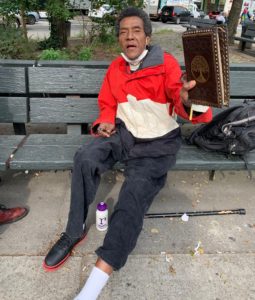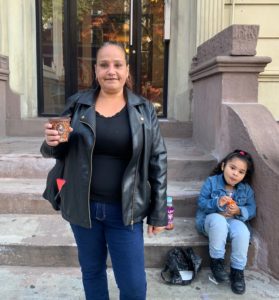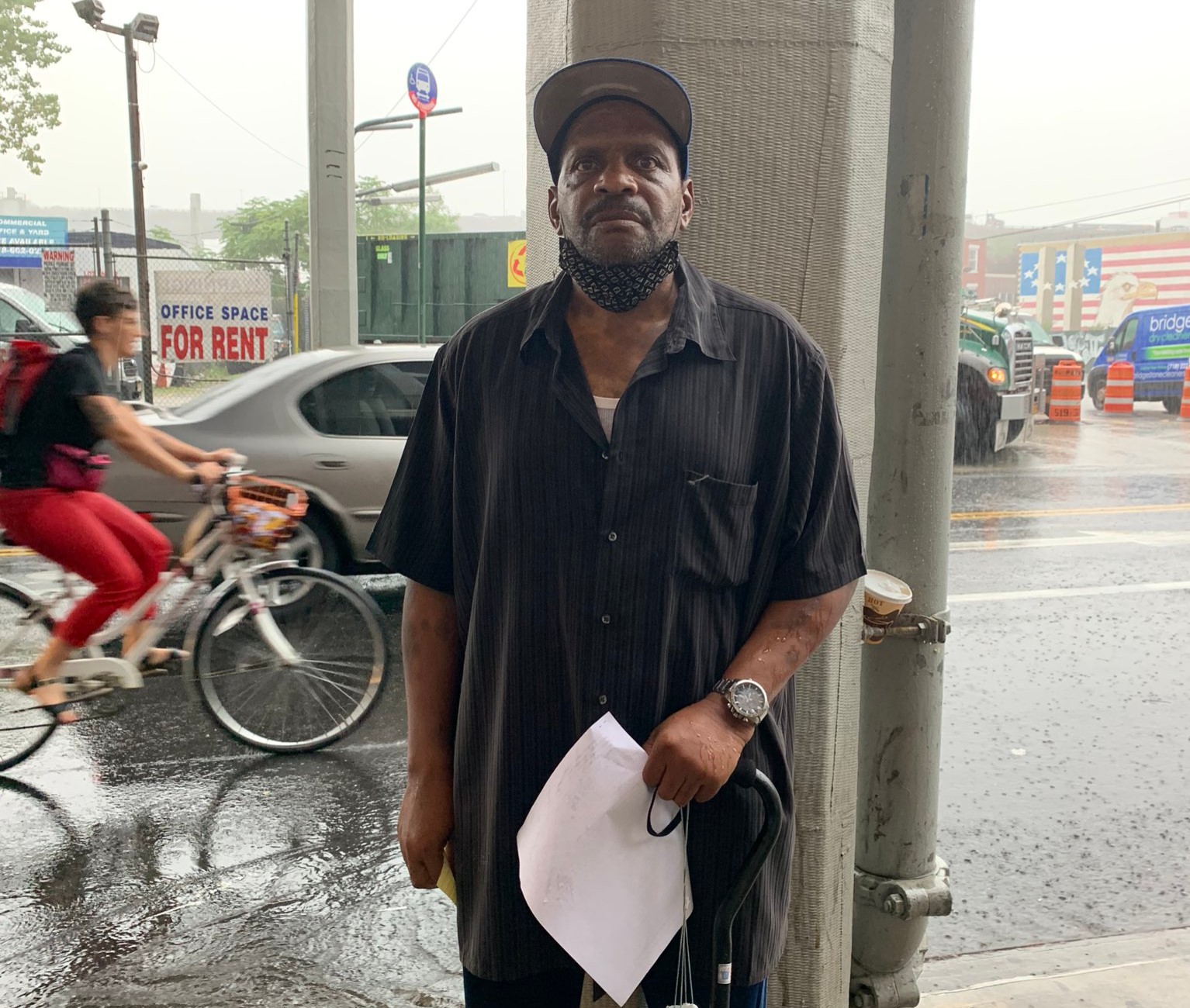Every day, vulnerable New Yorkers are being forced to choose between accessing their lifesaving medication, or protecting themselves and their loved ones from COVID-19.
COVID-19 poses a direct threat to people’s ability to access their methadone. Despite its proven effectiveness, and being considered a “gold standard” for opioid use disorder (OUD) treatment, the medication remains over-regulated and its users over-surveilled.
Most clients at methadone clinics are required to come in for their medication every day, often traveling well over an hour on public transportation. This routine was not sustainable for most before COVID-19—let alone during, given that many methadone patients have health conditions that put them at heightened risk for the virus.
A recent study showed that people with substance use disorders, particularly those with opiate use disorder, were more likely than those without to develop COVID and experience worse COVID outcomes such as hospitalization and death. The same study also highlighted data that corroborate national trends showing that Black and Brown communities are disproportionately impacted by COVID-19—revealing that Black Americans with OUD were four times more likely to develop COVID-19 than whites. This is particularly alarming when over 70 percent of New York City’s methadone patients are Black and Brown.
In order to mitigate these risks, the federal government lifted regulations to allow methadone programs to give clients 14-28 days of take-home doses. New York’s Office of Addiction Services and Supports (OASAS) then suggested that clinics give clients take-home doses, but left it up to the clinics’ discretion. And after pressure over how people were being left in isolation without their medication, OASAS—in conjunction with NYC’s Department of Health and Mental Hygiene—launched a methadone delivery service in April. But eligibility is strategically restricted, most people don’t even know about it, and few have benefited.
On September 15, during a New York State Assembly hearing on the impacts of COVID-19 on substance use, Commissioner Arlene Gonzalez-Sanchez of OASAS stated, “OASAS’s number one priority is to remain vigilant about the health and safety of the vulnerable populations we serve.”
This could not be further from the truth. OASAS is not prioritizing the safety of vulnerable New Yorkers—and if they had spent any time genuinely listening to people who use methadone, they would know that.
“I am risking my life to get my medicine when I don’t need to be. Why? Is my life not worth protecting?”
There are people like Charles (pictured top), a 67-year-old Black man with diabetes and severe asthma. Three times a week, he travels two hours each way to get his medication at Carlos Pagan Recovery Center in Red Hook, Brooklyn. His clinic has refused to give him more take-home bottles—and when I informed him that the city had set up a delivery service program, he was beside himself in disbelief.
“I am risking my life to get my medicine when I don’t need to be,” he said. “Why? Is my life not worth protecting?”
Charles’s experience is far from unique. Week after week, I continue to meet people who are not receiving the take-home doses they are entitled to. Like Charles, most have at least one (if not all) of the preexisting health conditions that put people at increased risk from COVID-19. They have—since the onset of the pandemic—been forced to travel across the city to get their medication nearly every day of the week. And like Charles, not a single person was aware that a delivery service even existed.
The complete lack of information about the city’s delivery program is especially disturbing when I encounter people like Kenneth—a client at the methadone program down the block from Charles’s clinic.
Every day, Kenneth travels two hours each way from the Bronx to get to his clinic in Red Hook, despite being a 60-year-old Black man living with COPD, diabetes and asthma. Another perfect candidate for the delivery program, he also had no idea that it existed.

Alonzo
The same is true for Alonzo, who attends Carlos Pagan with Charles. Alonzo is 66, Black and was recently released from the hospital after suffering a heart attack, in addition to having COPD and asthma. Throughout the pandemic, and still now after his heart attack, he has had to come to his clinic three times a week—even after showing his clinic his hospital discharge papers, which included a note from a doctor suggesting that he remain home to rest in isolation.
“I’m too old for this,” he said. “I just want peace.”
Yolanda is a Latina single mother in her late 40s who is also at high risk because of her other health conditions. She travels over an hour each way, three times a week, to get her methadone. Like many other parents at this time, she cannot afford childcare, and has no choice but to bring her two young children with her on these journeys.
This entirely unnecessary barrier to her medication prevents both Yolanda and her children from living healthy, stable lives. On top of navigating her children’s remote learning with this schedule, Yolanda has to consider what could happen to her children if she were to contract the virus.
“I’m all they’ve got,” she said. “And they could lose that, all because this clinic wants to make it hard for me to get my methadone. What kind of life is that?”

Yolanda
There is absolutely no reason why Charles, Kenneth, Alonzo and Yolanda—and the countless other methadone patients like them—should continue to risk their lives nearly every day so that they can access their lifesaving medication. The federal government relaxed its take-home guidelines and the city launched its delivery service to protect precisely this population—so why the lack of implementation?
For months now, OASAS has, both implicitly through inaction and in private conversations, repeatedly dismissed concerns raised by patients and advocates over these alarming conditions—sticking to its line that “it is up to the clinics” to decide how take-home bottles will be distributed.
The indifference that OASAS has shown for methadone clients during this time will not be forgotten.
But the reality is that, as a state department whose sole purpose is to improve the system of care for people with substance use disorders, OASAS has chosen to evade its responsibility to properly regulate clinics and ensure that they are giving out take-home doses.
To make matters worse, OASAS’s neglect is not only resulting in the widespread failure to protect people from potentially fatal COVID-19 exposure, but also exacerbating the terrifying surge in overdoses that New York is facing. The necessity of social distancing has resulted in enormous lines at methadone clinics (like those in Red Hook that Charles, Alonzo and Kenneth attend), where clients routinely wait several hours to get their medication. As long as these horrific barriers exist, it will be easier for people to access the unsafe supply of opioids on the street than it is for them to access their regulated, lifesaving medication.
Now, New York is bracing itself for a second wave of the virus. At this pivotal moment, OASAS should be applying the lessons learned from the first wave, and adjusting its systems of support so that—across the board—vulnerable New Yorkers have safe and secure access to their methadone.
Instead, OASAS is yet again choosing to abandon the most vulnerable among us to grapple with a disaster of its own creation. Over the last few weeks alone, I have met an increasing number of methadone clients in Brooklyn who are being told by their clinics that COVID is no longer a threat and having their take-homes taken away. Some of them have now collaborated with my organization to create a petition demanding safe, consistent methadone access.
That OASAS continues to tout itself as a progressive and innovative department in light of this neglect is truly appalling. The indifference that OASAS has shown for methadone clients during this time will not be forgotten, and the unnecessary suffering of thousands of vulnerable New Yorkers will forever define its current leadership.
Photographs by Biz Berthy





Show Comments